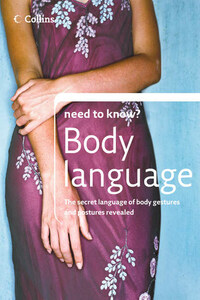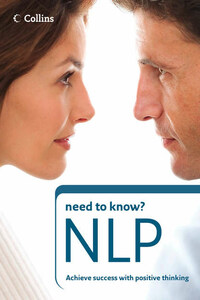What do the gestures you use mean? How can you interpret what a person is really thinking about when they are talking to you? How can you become a better communicator? Communication is a process in which two people influence each other through giving and receiving information. One of the channels we use to communicate information is speech, or verbal language. But without words, you can still communicate through the oldest human language â body language, also known as nonverbal communication.
Every time you are face to face with another human being you speak to them through your body. The body has many ways to communicate: lavish gestures like waving, movements such as changes in the way we stand or sit, or in the position and directions of the head and eyes, as well as facial expressions and even the tiniest twitch of a muscle.
Any way in which you behave that can be seen by the other person as having a meaning is a form of language. Whatever words you choose to use in a conversation, it is inevitable that you are also talking in body language at the same time.
Understanding body language can make an enormous difference to every part of your life. When you see a picture in a magazine of a group of people, do you find that as you are looking at them you are wondering what they really think about each other? Whether watching celebrities on TV, observing office politics or meeting friends socially, we all spend time looking at other people and trying to work out what their behaviour really means.
Why we trust and distrust people
There are people you like the moment you meet them. Before they even begin talking they seem friendly and trustworthy. But what about the opposite experience? Youâve probably also had the feeling that you didnât trust someone when you first began talking to them.
The fact that you like or dislike someone doesnât always seem to make sense. Whatâs being said may sound fine in both cases, but your brain is telling you something about the other person. Youâve got a gut feeling. If you like them, it is because they are sending out all the ârightâ signals. If something seems wrong, it is probably because their verbal and nonverbal messages are different. They may have made some tiny involuntary movement that is giving a different message from what they are saying. Probably neither of you realizes consciously what has happened, but you have picked up the discrepancy between what they are saying and doing.
What does body language do?
Body language is a window into whatâs going on inside your mind. Each and every movement reveals your true feelings about the other person or the situation. As you transmit these feelings, in return you receive and interpret messages about the other personâs attitudes towards you through their body language.
Gestures and movements occur when you are speaking but they may also be used as a substitute for words. Their message may support the verbal message or undermine it. What is deliberately not said verbally is often said nonverbally.
Deliberate or involuntary?
Most body language is spontaneous and outside your conscious awareness. However some gestures are deliberate. If you want to become a charismatic communicator, you need to be as effective in your physical communication as you are in your words. Great communicators are very aware of their whole communication and learn to control the messages they transmit through their bodies.
Our knowledge of nonverbal communication has grown enormously over the last 30 years or so. Anthropologists and researchers in psychology, sociology and language have all researched how body language works. Not all body language is an exact science, but there is now more agreement about the probable meanings of gestures and movements.
The first people to look at how speech and gestures were related to each other were the Ancient Greeks and Romans. Hippocrates and Aristotle both commented on how our personalities throw up differences between us. The Romans recognized that it wasnât just words that made a great orator. They laid down a whole range of gestures to accompany the delivery of speeches.
Two thousand years ago, Cicero, the Roman philosopher (c.106-43 BC), suggested that the bodyâs actions expressed âthe sentiments and passionsâ of the soul. He saw that the body, words, expressions and gestures were used as a whole to make up an instrument of communication.














